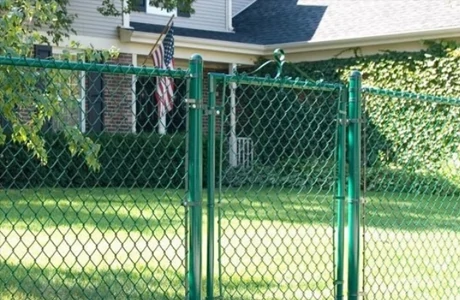Electric Wire Mesh Fencing for Enhanced Security and Versatile Applications
Understanding Electric Wire Netting A Comprehensive Overview
Electric wire netting, also referred to as electric fencing or electrified netting, has emerged as an effective solution for various applications, ranging from agricultural settings to security measures in residential areas. This innovative fencing system not only offers physical barriers but also provides an electric deterrent that is effective against many types of intruders, both human and animal. In this article, we will delve into the intricacies of electric wire netting, discussing its components, applications, benefits, and considerations for users.
What is Electric Wire Netting?
Electric wire netting consists of a series of interconnected wires or mesh grids that carry an electric charge. These wires are typically made from durable materials such as galvanized steel or aluminum, which can withstand environmental conditions while maintaining conductivity. This type of netting is designed to enclose specific areas, with the electric charge acting as a deterrent against unauthorized access or wandering livestock.
Components of Electric Wire Netting
An electric wire netting system comprises several essential components
1. Conductive Wires These wires are the core of the system, and are often spaced strategically to prevent animals or intruders from breaching the fence.
2. Energizer This device generates the electric pulse that runs through the wires. Energizers are available in various voltage levels, allowing users to choose the appropriate strength based on their needs.
3. Insulators These prevent the electric current from grounding out through the fence posts, ensuring that the full charge is maintained along the wire.
4. Posts These support the entire structure, keeping the netting upright and secure. They are typically made of strong materials that can endure the tension of the wires.
5. Ground Rod This component is essential for completing the electrical circuit. Proper grounding is critical for the effective operation of the electric fence.
Applications of Electric Wire Netting
Electric wire netting has a variety of applications, including
1. Agriculture Farmers frequently use electric netting to contain livestock and protect crops from wildlife. It is especially valuable for keeping out animals such as deer, raccoons, and rabbits, which can cause significant damage to agricultural products.
2. Security Many homeowners and businesses install electric fencing as a security measure to deter trespassers. The visible barrier combined with the electric charge instills a sense of security for property owners.
electric wire netting

4. Dog Fencing Pet owners can use electric fencing to create boundaries for their dogs, giving them freedom to roam while ensuring they remain safe and contained.
Benefits of Electric Wire Netting
Electric wire netting offers numerous advantages
- Cost-Effective Compared to traditional fencing methods, electric netting can be a more economical choice, especially in large areas that require fencing.
- Versatility It can be easily deployed in various terrains and adjusted to fit different shapes and sizes.
- Low Maintenance Beyond the initial installation, electric netting requires minimal upkeep compared to other fencing systems.
- Effective Deterrent The electric charge is an effective deterrent that can successfully prevent animals and humans from breaching the enclosure.
Considerations for Users
While electric wire netting provides many benefits, prospective users should consider several factors
- Regulations Always check local regulations regarding electric fencing as there may be restrictions and safety guidelines to follow.
- Training Users must be educated on the proper use and maintenance of the system to ensure safety and efficacy.
- Regular Testing It's crucial to routinely test the energizer and connections to ensure the system operates effectively and safely.
Conclusion
Electric wire netting represents a modern solution to challenges faced in agriculture and security. Its unique combination of physical barriers and electrical deterrents makes it a viable option for many applications. By understanding the components, benefits, and considerations associated with electric wire netting, users can effectively leverage this technology to protect their property and manage animal movement. As technology continues to evolve, advancements in electric fencing may further enhance its effectiveness and accessibility, making it an indispensable tool for a variety of fields.
-
Weather Resistance of Woven Wire and Chicken Wire Fencing MaterialsNewsJun.05,2025
-
Umbrella Nails Innovations in Roofing Fasteners for Wind ResistanceNewsJun.05,2025
-
Modern Barbed Wire Fence Designs for Perimeter ProtectionNewsJun.05,2025
-
How Iron Nail Wire Enhances Nail Strength and Installation EfficiencyNewsJun.05,2025
-
High-Security Razor Fence Solutions for Perimeter ProtectionNewsJun.05,2025
-
Durable Wire Netting Fence Solutions for Animal EnclosuresNewsJun.05,2025




